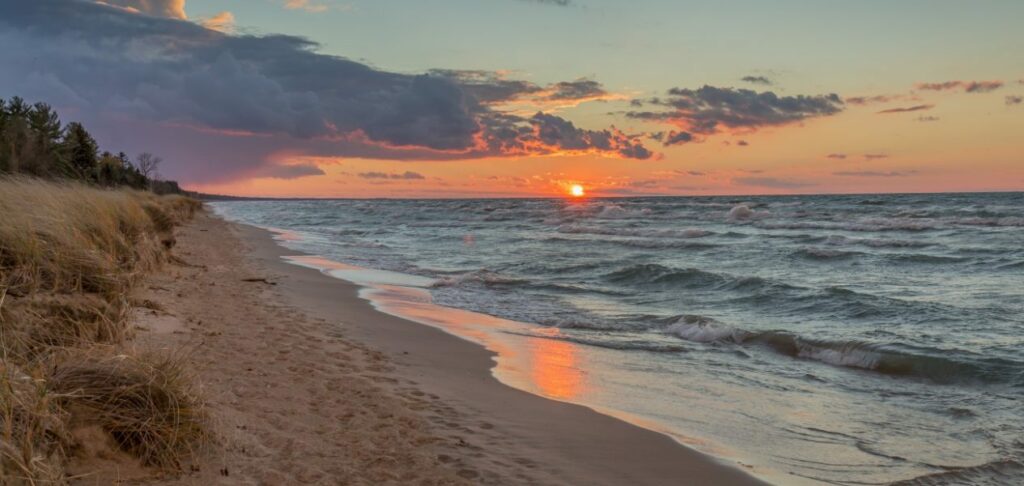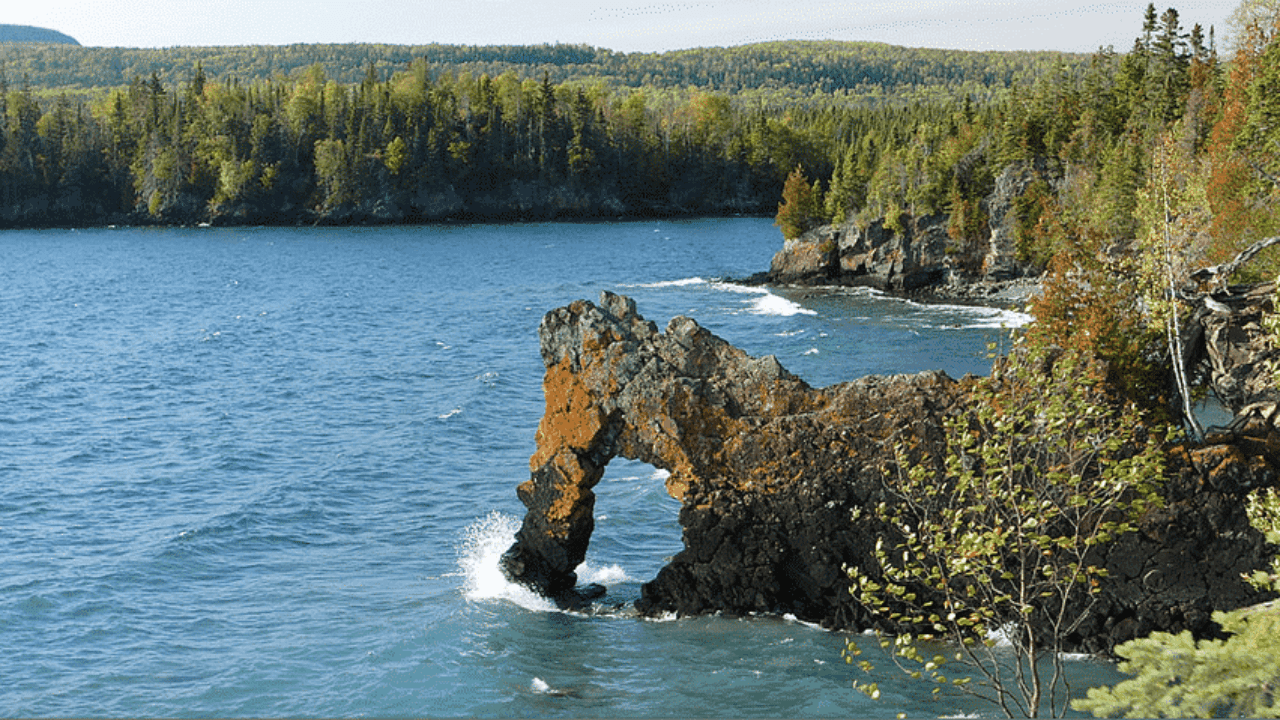Camping presents an extraordinary opportunity to immerse yourself in nature’s embrace, fostering cherished memories with your loved ones. Ontario, with its diverse landscapes and abundance of provincial parks, conservation areas, and private campgrounds, emerges as an idyllic destination for families seeking an unforgettable camping experience. Whether you’re seasoned campers or embarking on your first family adventure, Ontario’s vast wilderness beckons with its serene lakes, towering forests, and captivating wildlife.
Embark on an Unforgettable Camping Adventure: Unveiling the Best Places to Camp in Ontario for Families
Camping presents an extraordinary opportunity to immerse yourself in nature’s embrace, fostering cherished memories with your loved ones. Ontario, with its diverse landscapes and abundance of provincial parks, conservation areas, and private campgrounds, emerges as an idyllic destination for families seeking an unforgettable camping experience. Whether you’re seasoned campers or embarking on your first family adventure, Ontario’s vast wilderness beckons with its serene lakes, towering forests, and captivating wildlife.

Choosing the Right Campground: A Perfect Fit for Your Family’s Needs
Ontario’s diverse array of campgrounds caters to a wide range of preferences and comfort levels. Provincial parks, such as Algonquin Provincial Park and Killbear Provincial Park, offer a blend of natural beauty, well-maintained facilities, and ranger-led programs.
Conservation areas, like Rockwood Conservation Area and Bronte Creek Provincial Park, provide a balance of outdoor recreation and educational opportunities.
Private campgrounds, such as Yogi Bear’s Jellystone Park and Valens Lake Conservation Area, often boast family-friendly amenities like swimming pools, playgrounds, and themed activities.
| Campground Type | Pros | Cons |
|---|---|---|
| Provincial Parks | Well-maintained facilities, ranger-led programs, diverse landscapes | Can be crowded during peak season |
| Conservation Areas | Balance of outdoor recreation and educational opportunities, often less crowded than provincial parks | May have fewer amenities than provincial parks |
| Private Campgrounds | Family-friendly amenities, often themed activities | Can be more expensive than provincial parks or conservation areas |
Ultimately, the best campground for your family will depend on your individual needs and preferences. Consider factors such as:
- Size of your family: If you have a small family, you may be fine in a smaller campground with fewer amenities. If you have a larger family, you may need a larger campground with more amenities.
- Experience level: If you are new to camping, you may want to choose a campground with more amenities and activities. If you are more experienced, you may be comfortable in a more remote campground.
- Budget: Provincial parks and conservation areas are generally the most affordable options. Private campgrounds can be more expensive, but they often offer more amenities.
- Interests: If you are interested in swimming, fishing, or hiking, choose a campground that has those activities available. If you are looking for a more relaxing camping experience, choose a campground that is located in a quiet area.
Once you have considered your needs and preferences, you can start researching specific campgrounds. Ontario Parks has a website with a searchable database of all provincial parks and conservation areas. You can also find information on private campgrounds online or through campground directories.
Here are some additional tips for choosing the right campground for your family:
- Read reviews: Before you book a campsite, read reviews from other campers. This can help you get a sense of the campground’s facilities, atmosphere, and overall quality.
- Book your campsite in advance: Campgrounds can fill up quickly, especially during peak season. Book your campsite in advance to ensure that you get the spot you want.
- Arrive early: This will give you time to set up your campsite and explore the campground before dark.
- Be respectful of other campers: Keep noise levels down and dispose of trash properly.
- Have fun! Camping is a great way to spend time with your family and enjoy the outdoors. Relax, have fun, and make memories that will last a lifetime.
Packing the Essentials: Gear Up for a Smooth and Enjoyable Camping Trip
Proper preparation is paramount to a successful camping expedition. A well-packed arsenal of gear ensures you’re equipped for any situation, from the unpredictable weather to unexpected encounters with nature’s creatures. Essential items include:
Shelter: Your Home Away from Home
- Tent: Your tent serves as your sanctuary in the wilderness, providing protection from the elements. Choose a tent that is the appropriate size for your family and consider factors like weather resistance, ventilation, and ease of setup.
Sleep in Comfort: Restful Nights Under the Stars
- Sleeping Bags: Sleeping bags provide warmth and insulation against the cool night air. Select sleeping bags with appropriate temperature ratings based on the expected weather conditions.
- Sleeping Pads: Sleeping pads provide insulation and cushioning from the ground, ensuring a comfortable night’s sleep. Choose sleeping pads with the desired thickness and insulation level.
Cooking and Dining: Fueling Your Adventures
- Stove: A camping stove is essential for preparing meals and hot drinks. Choose a stove that is lightweight, portable, and compatible with the fuel you prefer.
- Cookware: Cooking utensils are necessary for preparing and enjoying meals. Pack a set of cookware that includes pots, pans, plates, cups, and utensils.
- Cooler: A cooler keeps your food and drinks fresh and prevents spoilage. Choose a cooler with the appropriate size and insulation capacity for your needs.
Nourishment and Hydration: Staying Sustained
- Food: Plan your meals and snacks in advance to avoid last-minute scrambles. Pack a variety of nutritious and easy-to-prepare options, considering allergies and dietary restrictions.
- Water: Stay hydrated by packing plenty of water. Consider using a water purification system if you’re unsure about the water source at your campsite.
Illumination and Safety: Navigating the Dark and Unexpected
- Flashlight: A flashlight is essential for navigating in the dark and for emergencies. Choose a flashlight with multiple brightness settings and a long battery life.
- First Aid Kit: A well-stocked first aid kit is crucial for treating minor injuries and illnesses. Pack items like bandages, antiseptic wipes, pain relievers, and insect bite treatment.
Personal Care: Maintaining Comfort and Hygiene
- Toiletries: Pack toiletries like soap, shampoo, sunscreen, and insect repellent to stay clean and comfortable.
Additional Considerations: Enhancing Your Camping Experience
- Insect Repellent: Protect yourself from mosquitoes and other pesky insects by packing insect repellent with an appropriate DEET concentration for your needs.
- Camping Chairs: Comfortable camping chairs provide a place to relax and enjoy the outdoors. Choose chairs that are lightweight, portable, and easy to set up.
- Camp Table: A camp table provides a convenient surface for cooking, eating, and playing games. Choose a table that is sturdy, lightweight, and folds up easily.
- Games and Activities: Pack games, books, and other activities to keep everyone entertained, especially during downtime or rainy weather.
- Camera: Capture your memories and share them with loved ones by bringing a camera or smartphone to document your camping adventures.
Planning a move to Canada with your family in 2023? Explore our guide to the Best places to live in Canada for families 2023 and discover the perfect communities to call home.
Planning Meals and Snacks: Fueling Your Family’s Adventures
Planning your meals and snacks in advance streamlines your camping trip, minimizing stress and ensuring everyone stays nourished throughout their adventures. Consider easy-to-prepare and nutrient-rich options that cater to everyone’s preferences and dietary needs.
Easy Breakfast Delights to Kickstart Your Day
- Pancakes: Pancakes are a simple yet satisfying breakfast option that can be whipped up quickly over a camping stove. Prepare a pancake mix or bring along your favorite homemade batter.
- Breakfast Sandwiches: Breakfast sandwiches offer a quick and portable breakfast option. Pack your favorite bread, fillings like eggs, cheese, and breakfast meats, and assemble sandwiches on-site.
Lunchtime Staples for Energy-Filled Adventures
- Pasta Salads: Pasta salads are a versatile and refreshing lunch option. Cook pasta in advance, add your favorite vegetables, dressings, and protein options like grilled chicken or tuna for a hearty and nutritious meal.
- Sandwiches: Sandwiches are a classic and convenient lunch choice. Pack a variety of bread, fillings, spreads, and condiments to create personalized sandwiches for everyone.
Hearty Dinners to Replenish Energy After a Day of Exploring
- Chili: Chili is a hearty and flavorful dinner option that can be cooked over a campfire or a camping stove. Prepare a chili base in advance or bring along a canned variety, and add your favorite toppings like beans, corn, and cheese.
- Hot Dogs and Burgers: Hot dogs and burgers are crowd-pleasing dinner options that are easy to prepare over a campfire or a camping stove. Bring along your favorite toppings, buns, and sides for a complete meal.
Nutritious Snacks to Keep the Energy Levels High
- Fruits: Fruits provide a refreshing and nutrient-rich snack option. Pack a variety of fruits that are easy to transport and store, such as apples, bananas, berries, and oranges.
- Granola Bars: Granola bars offer a convenient and portable source of energy and nutrients. Choose granola bars that are made with whole grains, nuts, and fruits for a healthy snack.
- Trail Mix: Trail mix is a versatile and customizable snack option. Combine your favorite nuts, seeds, dried fruits, and pretzels for a delicious and energy-boosting snack.
Food Safety: Keeping Your Camp Cuisine Fresh and Free from Unwanted Guests
- Coolers and Ice Packs: Pack a cooler with ice packs to keep food and drinks fresh and prevent spoilage. Consider using multiple coolers to separate perishable items from non-perishable items.
- Airtight Containers: Store food in airtight containers to protect it from insects, animals, and moisture. Reusable containers are eco-friendly and can be easily washed and reused.
- Proper Food Handling: Practice proper food handling techniques to prevent foodborne illnesses. Wash hands frequently, especially before and after handling food. Keep food at proper temperatures and avoid cross-contamination.
By planning your meals and snacks in advance and following these food safety guidelines, you can ensure that your family has a delicious, nutritious, and safe camping experience.
FAQ
Q1: What are some of the best places to camp in Ontario for families?
Ontario offers a wide variety of campgrounds to suit all families’ needs and preferences. Some of the most popular and family-friendly campgrounds include:
- The Pinery Provincial Park: Located on the shores of Lake Huron, The Pinery Provincial Park offers stunning beaches, sand dunes, and a variety of hiking trails.
- Algonquin Provincial Park: Renowned for its pristine lakes and forests, Algonquin Provincial Park offers canoeing, kayaking, and wildlife viewing opportunities.
- Sandbanks Provincial Park: With its expansive sand dunes, Sandbanks Provincial Park is a haven for swimming, sunbathing, and sandcastle building.
- Bon Echo Provincial Park: Home to the iconic Mazinaw Rock, Bon Echo Provincial Park provides stunning scenery, hiking trails, and canoeing opportunities.
- Killbear Provincial Park: Situated on Georgian Bay, Killbear Provincial Park offers granite cliffs, sandy beaches, and excellent swimming conditions.
Q2: What are some tips for planning a family camping trip in Ontario?
Planning is key to a successful family camping trip in Ontario. Here are some tips to get you started:
- Choose the right campground: Consider your family’s needs and preferences when choosing a campground. Factors to consider include the type of campground, amenities, location, and activities.
- Pack the essentials: Make sure you pack all of the gear you need, including a tent, sleeping bags, sleeping pads, stove, cookware, utensils, cooler, food, water, flashlight, first aid kit, and toiletries.
- Plan your meals and snacks: Plan your meals and snacks ahead of time to save time and money. Pack easy-to-prepare and nutrient-rich options.
- Research the area: Familiarize yourself with the area around your campsite, including trails, attractions, and safety information.
- Leave no trace: Follow the principles of Leave No Trace to minimize your impact on the environment.
Q3: What are some activities that families can enjoy while camping in Ontario?
Ontario offers a variety of activities for families to enjoy while camping, including:
- Hiking: Ontario has an extensive network of hiking trails, suitable for all ages and abilities.
- Swimming: Many campgrounds in Ontario offer access to lakes or rivers for swimming.
- Canoeing and kayaking: Canoeing and kayaking are popular activities in Ontario, and many campgrounds offer canoe and kayak rentals.
- Fishing: Ontario is home to a variety of fish species, and many campgrounds offer access to fishing lakes and rivers.
- Wildlife viewing: Ontario is home to a variety of wildlife, including deer, moose, bears, and wolves.
- Camping games: There are many fun and easy games that families can enjoy while camping, such as tag, frisbee, and scavenger hunts.
Q4: What are some safety tips for camping with families?
Safety is important when camping with families. Here are some tips to keep your family safe:
- Choose a safe campsite: Avoid campsites that are near water or cliffs.
- Supervise children closely: Never leave children unattended around water or campfires.
- Teach children about fire safety: Teach children how to build a safe campfire and how to extinguish it properly.
- Be aware of wildlife: Keep food and trash stored properly to avoid attracting wildlife.
- Be prepared for emergencies: Have a first aid kit handy and know what to do in case of an emergency.
Q5: What are some packing tips for camping with families?
Packing is essential for a successful camping trip. Here are some tips for packing with families:
- Make a checklist: Make a checklist of all of the gear you need to pack.
- Pack in layers: Pack clothing that can be layered to adjust to changing temperatures.
- Organize your gear: Use bins or bags to organize your gear.
- Label your gear: Label your gear to avoid confusion.
- Pack light: Pack only what you need to avoid clutter and weight.
By following these tips, you can plan a fun, safe, and memorable family camping trip in Ontario.
- Crypto Quotes’ Red Flags: Avoid Costly Mistakes - June 30, 2025
- Unlock Inspirational Crypto Quotes: Future Predictions - June 30, 2025
- Famous Bitcoin Quotes: A Deep Dive into Crypto’s History - June 30, 2025
















